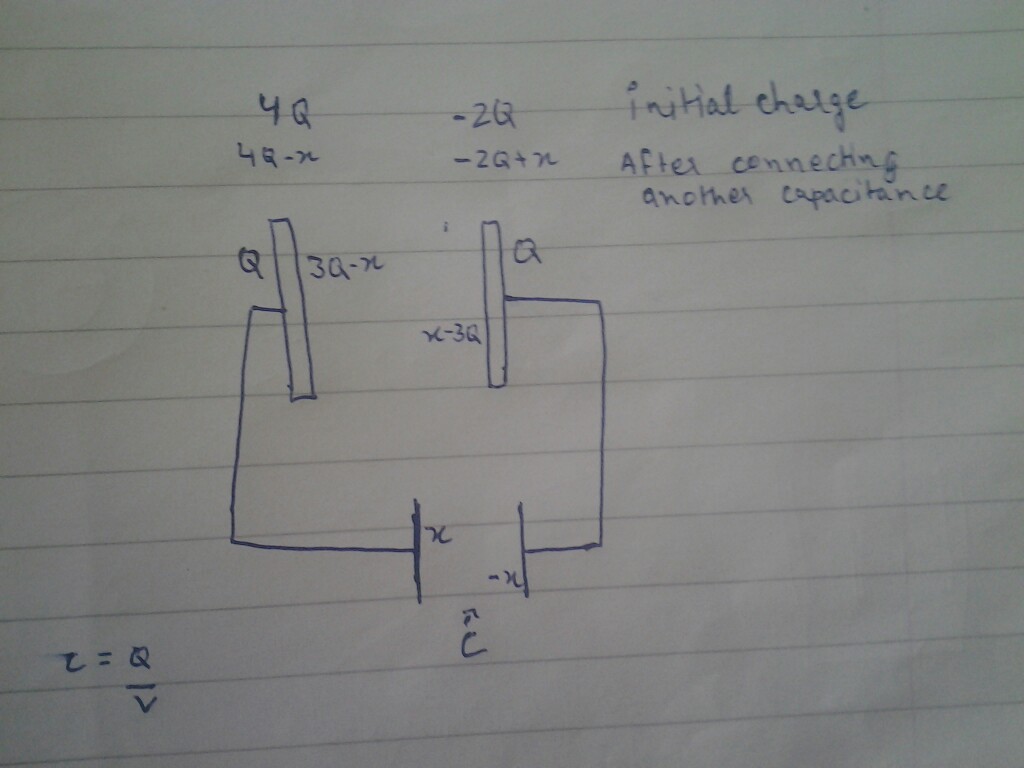If the plates of a parallel plate capacitor are given charges 4Q and -2Q . The capacitor is then connected across an uncharged capacitor of the same capacitance as first one (=C) . Now we have to find the final potential difference between the plates of first capacitor .
I tried it and done the charge distribution but not able to proceed .

